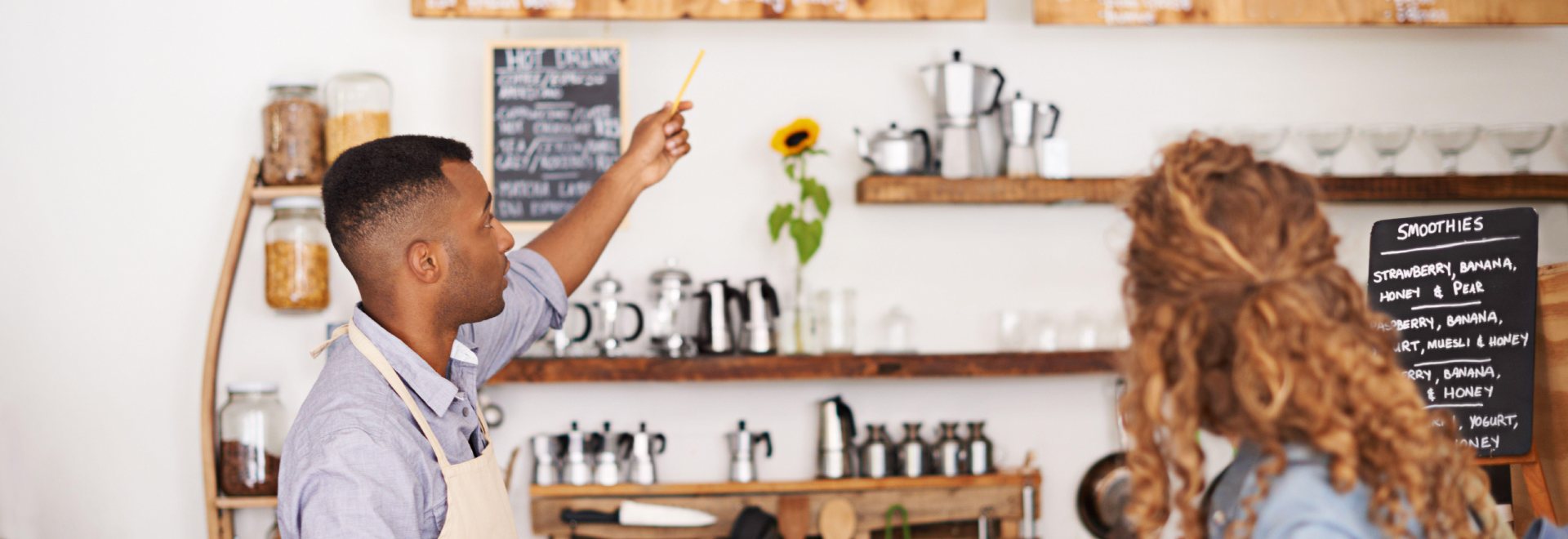How can baristas make more time for their customers?
Matt Haw speaks with Norwegian Brewers Cup Champion, Tom Kuyken, about how baristas can juggle chatting to customers with the pressures of their all-important daily tasks.
Baristas are some of the hardest-working professionals in the hospitality industry. Between handling several “rushes” a day and consistently fulfilling ever more complicated orders, it is a job that often leaves time for little else, let alone conversation.
However, daily interactions with customers have become vital to the long-term success of coffee shops around the world.
According to recent data from market research company Zippia, 42% of customers are willing to pay more when offered a friendly, more welcoming customer experience and say they are very likely to make repeat visits. This is compared to 89% of consumers who say they have switched to a competitor due to poor customer service.
For Norwegian Brewers Cup Champion, Tom Kuyken, customer engagement is a cornerstone of coffee shops.
“It’s the thing that the whole dynamic of a coffee shop is built around,” he says. “For many people, it might be the most important thing.
“The barista-customer interaction can be so many things. Someone could be having a bad day and you can contribute to making that better. Or it might be someone into the nuances of coffee who wants to learn through you.”
These types of interactions are particularly important in the fiercely competitive speciality coffee sector, where education is placed front and centre. If a barista doesn’t have the time to explain the origin of the coffee or the way in which it is processed, for example, customers will very quickly seek alternatives.
Yet it’s not just the customer who stands to benefit. Taking the time to listen to the needs of customers can help café owners improve their business, whether it’s the volume of music or the single origin coffees on offer.
With so much riding on the barista-customer relationship, it begs the question: How can a barista increase the amount of quality time they spend with each customer?
Leveraging technology
Since the early days of automation, coffee professionals have been wary of its potential to “replace” humans or, at the very least, minimise their roles.
As the technology behind automation becomes increasingly sophisticated, these fears have only heightened.
However, a new school of thought suggests that automation serves to empower baristas rather than replace them. The idea is that automating certain steps of the workflow enables coffee shop staff to focus on other, more important aspects that require a human touch, such as customer engagement.
Tom points out that espresso puck preparation is a good example of a daily task that diverts attention and can often result in repetitive strain injuries for the barista.
Automatic tampers, on the other hand, help remove the risk of such injuries, while streamlining barista workflow without compromising on the end product.
Coffee shops that serve pour-over coffees can also benefit considerably from automation.
As a Brewer’s Cup Champion, Tom also knows how inconsistent and labour intensive pour-over coffees can be. “It’s an answer that has been given a hundred times before, but people are less consistent than machines,” he admits. “If anything, coffee from automated brewers is better.”
In this case, batch brewers or automatic pour-over machines – once calibrated – can be relied on to produce consistent drinks throughout the day, allowing baristas to spend their time on other tasks.
What does the future hold?
A shift in consumer preference towards convenience is fuelling the rise of automation. In response, coffee shops are increasingly leveraging technology behind the bar to satisfy the demand for convenience – without sacrificing quality.
Concern for barista wellbeing is also playing a role. Investment in new technologies can minimise strenuous, repetitive tasks, freeing up the barista to engage with their customers. It also helps ensure they are in a happy and healthy frame of mind when they do so.
The potential of automation in coffee shops has also resulted in some fascinating predictions for the future.
Former World Barista Champion Matt Perger envisions the barista role dovetailing into two distinct positions: a technical barista, responsible for the calibration and quality control of the automatic hardware, and a service-oriented barista who engages with guests.
Tom, meanwhile, envisions the service barista as being akin to a sommelier.
“In terms of physical actions, they don’t do much more than open the bottle,” he reasons, “but people want to interact with them because they know about the wine you’re drinking.”
Automation is inevitable, but it’s a new dawn for coffee service – not the end of the world. Café owners striving to create a sense of community around their business must prioritise the relationship between barista and customer, and automation can play a crucial part.
What will become increasingly clear is that innovative automation that facilitates this relationship and supports the barista in their role is not something to be suspicious of, but celebrated and widely adopted.








